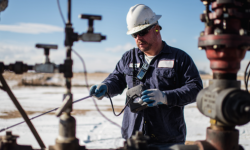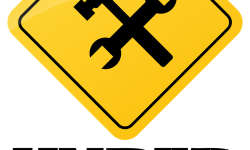One of Australia's largest cattle companies is trialling the use of satellite technology to track and monitor staff working in remote areas.
Australian Agricultural Company (AACo) is using the pocket-sized beacons on four remote Northern Territory and Queensland cattle stations to assess their suitability as a safety management tool.
The GPS devices can send pre-prepared messages to the station office, and more importantly, distress signals that are beamed to the Australian Maritime Safety Authority (AMSA) for an immediate search and rescue response.
The technology is currently being used on Brunette Downs Station on the Barkly Tableland, Camfield Station in the Victoria River District, and on Canobie Station and Wondoola Station in the southern gulf region of Queensland.
If in trouble, press the button
Canobie Station manager Jack Morris said it was imperative to keep in touch will staff in areas where phones and UHF radios did not work.
"There's 700,000 hectares here," he said.
"Mobiles phone [coverage] is non-existent and there are UHF [radio] blackspots so we've taken these other steps to try and keep our people safe and to know where they are.
"We've got them with loader drivers, grader drivers, because they're camped out a lot, and bore men and blokes delivering licks to cattle, so if they are in trouble they can press the button.
Mr Morris said there had been no resistance to the introduction of the satellite trackers.
"Even the older fellas are pretty keen on it," he said.
"We don't use them to track people but if they do press the help button, I just go onto the computer and I can pinpoint exactly where they are."
Mostly used as a 'check-in' service
AACo's workplace health and safety manager Joanna den Hertog said it was likely the satellite trackers would be implemented to more staff working across the company's 7 million hectares.
"We haven't had any problems with the satellite messages; we've found that the satellite is reliable," Ms den Hertog said.
"We have the option of sending pre-programmed messages like 'I'm okay' that get sent to emails and we've had no problems receiving those.
"The way that we most use it is as a check-in so, an alternative to the two-way radio check in.
"The person just sends the 'I'm okay' message as a daily message and then the manger knows that they're fine."
Ms den Hertog said the next phase of the trial would assess how widespread the technology would be used across AACo's large portfolio of cattle stations and feedlots.
"We're looking at application on all our properties where the manager identifies there's a risk that relates to a person who works in isolation," she said.
GPS system steps in for radio blackspots
Brunette Downs Station office coordinator Leila Duggan is required to regularly check on the whereabouts of workers operating remotely.
She said she usually uses UHF radios to make contact with staff but was happy to have another option.
"You do the 3-o'clock check-in to make sure where the bore runners are and to make sure they're safe," she said.
"And if they don't get home by 5pm or their allocated time, we know what route they've taken and we know to start looking for them.
If a worker finds themselves in a position where immediate help is required, an SOS message is relayed directly from the device to the Australian Maritime Safety Authority.
Once AMSA is alerted, a search and rescue response is initiated.
Advisor Linda Berryman said the time of the response was dependant on the type of device and the positioning of the device ensuring it was efficiently detected.
"When AMSA receives the distress message in the rescue coordination centre, if it's identified as a location on land, then we'll contact the state police to hand over coordination and response," she said.
Satellite safety: Australian Agricultural Company trials GPS technology to track staff working on remote cattle stations by Lisa Herbert. Available from <http://www.abc.net.au/news/2016-12-07/satellite-safety-aaco-trials-gps-technology-to-track-staff/8097514> [Dec 08, 2016] Photo: Camfield Station is trialling the GPS technology to keep in touch with staff working on the property.









